"Planet ISKCON" - 18 new articles
ISKCON Brampton, Canada: Drama - Krishna The 8th BoyDrama by his Holiness Bhaktimarga Swami On August 6th at the Meadowvale Theater in Mississuaga. Sri Nandanandana dasa: The Antiquity of Deity Worship in the Vedic Tradition, by Stephen Knapp
The Antiquity of Deity Worship in the Vedic Tradition There have been some people who have declared that the worship of Deities or images or the murti in the temples is but a recent invention of Vedic culture. However, that is not an accurate point. It is true that according to the different yugas or ages (such as Satya-yuga, Treta-yuga, Dvapara-yuga, and Kali-yuga) there are different processes for spiritual development that have been more recommended than others. For example, meditation was the recommended process for Satya-yuga, when people lived much longer and could sit in meditation for long periods of time. Then in Treta-yuga it was best to engage in various and extravagant rituals, havans, yajnas, or fire ceremonies. Then in Dvapara-yuga it was best to engage in elaborate worship, with opulent offerings to the Deities and prayers and mantras sung to the Deities. So, all of these processes have continued down through the ages to some degree or another. However, in Kali-yuga, though we still see all of these processes used, it is now the chanting of mantras, especially the Hare Krishna mantra, that is the most highly efficient and recommended process of spiritual growth in this age. So, Deity worship as seen in the temples has been around for thousands of years. And as evidence of that, we can find references in the Vedic texts, as well as in the historical holy sites around India. HISTORICAL SITES OF ANCIENT DEITY WORSHIP For example, seven kilometers south of Gokula, not far from Mathura, is the Dauji temple. Dauji is the Deity of Lord Balarama that was originally installed 5,000 years ago by King Vajranabha, Krishna’s great-grandson. From Lord Krishna and His queen Rukmini was bornthe great warrior Pradyumna, one of His prominent sons, who married the daughter of Rukmi, Rukmavati. They gave birth to Anirudha. Anirudha married Rukmi’s son’s daughter, Rachana, and from her was born Vajra, who would remain among the few survivors of the Yadus’ battle. (Bhag.10.90.35-37) In fact, King Vajra established a number of Krishna deities in the area. The present Dauji temple was built 200 years ago by Shyama Das of Delhi. Many people also attend this temple to get darshan of the single Deity of the 6 feet tall Lord Balarama. From the other side of the temple you can see the Deity of Revati, Lord Balarama’s wife. Nearby is the Balabhadra Kund or Kshira (milk) Sagara (sea) where the Deity of Lord Balarama had been hidden during the Moghul invasion. Near this kund is a temple to Harideva, and in the bazaar is another temple to Banke Bihari. East of Mathura is Vrindavana, and in Vrindavan is the Radha-Govindaji temple that is another of the seven major temples of Vrindavan. It is across the road and a little farther down the street from the Rangaji temple. It was established by Rupa Gosvami where he discovered the Gopala Deity. The beautiful temple is made out of red sandstone and was completed in 1590. The temple is now only two storeys tall but once reached up to seven storeys. The Muslim fanatic Aurangzeb, doing his dirty work, dismantled the upper five storeys of the temple due to his envy. While his men were destroying the temple, there was a loud thunderous noise that shook the ground. This put fear into the hearts of the men and they immediately stopped and ran away. Due to fear of the Moghuls, before they arrived the devotees moved the original deities to Jaipur where today many pilgrims go to see them. So the temple now has pratibhuh deities, or representative expansions, of the original Radha-Govindaji that are worshiped. The original Govindaji Deity is said to have been installed thousands of years ago by Vajranabha. Also, in Vrindavan, farther into the eastern part of town, are many other temples, including the large and ornate Lala Babu Mandir with Radha, Krishna, and Lalita deities. Then at the corner where we turn off from Loi Bazaar to go toward the Banke Bihari Mandir, we find the Gopishwara Mahadeva Shiva temple with a Shiva linga, said to have been originally installed by Krishna’s great-grandson, Vajranabha, and is the place where Lord Shiva did austerities in hopes of entering the rasa-lila dance as a gopi (cow-herd girl). In the morning devotees wash the linga with milk and other items, and then later the pujaris dress the linga in bright colored clothes. A few miles from Barsana is Nandagram, another place where Krishna performed many childhood pastimes described in the Bhagavatam. On top of the hill is the main temple that has Deities of Krishna, Balarama, Nanda Maharaja (Krishna’s father), Mother Yashoda, Srimati Radharani, and two of Krishna’s friends. There is also a Shiva lingam in a small shrine across from the temple called Nandisvara, said to have been installed by Vajranabha many hundreds of years ago. It is considered that this hill is an incarnation of Lord Shiva. From the top of the walls that surround the temple we can get good views of the area, and someone who is familiar with it can point out other nearby places connected with Krishna’s pastimes that we may want to visit. In the foothills of the large Girnar Hill in Gujarat is the Radha-Damodara temple with beautiful Deities of Krishna’s four-armed form. As Lakshmi-Narayana, the Deities are formed of the typical black and brown stone, and are described in the Skanda Purana as being self-manifested over 12,000 years ago. Next to the main temple is another for Lord Balarama and Revati, His consort. The original temple at this site is said to have been built 4500 years ago by Vajranath, Lord Krishna’s grandson. Not far away is a place where lived Vallabha, the 16th century Vaishnava acharya. Another interesting story is in regard to Guruvayoor in south India, which has the Deity of a four-armed standing Vishnu with a chakra in the right hand, conchshell in the left, and mace and lotus flower in the other two. Sri Krishna showed this form of His only twice during His appearance on earth: once to Arjuna just before the battle of Kurukshetra while speaking the Bhagavad-gita, and once to His parents, Vasudeva and Devaki, at the time of His birth. This Deity is said to have been worshiped by Lord Krishna Himself at Dwaraka thousands of years ago. The legend is that when Krishna left this world, He gave the Deity to His devotee Uddhava to look after it. He then ordered Brihaspati, the guru or spiritual teacher of the demigods, and Vayu, demigod of the wind, to take care of this Vishnu Deity and to install it somewhere for the benefit of humanity. When they arrived at Dwaraka to get the Deity, the city of Dwaraka had already sunk into the sea. After searching in the water, they found the Deity and went south. Not knowing where to go, they sat down by the side of a lake and began to meditate. Soon, Shiva appeared and after some discussion they decided to start a new temple for the Deity of Vishnu near the Rudratirtha Lake. Since that time 5,000 years ago, the place has been known as Guruvayoor (guru for Brihaspati and vayoor for Vayu). Hundreds of devotees visit the temple everyday for seeing the Deity. Western devotees, however, are not allowed in without a letter of permission from the Arya Samaj. Other examples could be given of the stories and legends of deities that are found in various temples throughout India, or holy places where temples have been established thousands of years ago, but I have supplied much of that kind of information in my book Seeing Spiritual India. However, there are additional references in the Vedic texts which show the importance of Deity worship from many thousands of years ago. SCRIPTURAL REFERENCES TO DEITY WORSHIP For example, even in the Puranas there are stories that include the importance of worshiping Deities. In the Bhagavata Purana (4th Canto, 8th Chapter) there is the popular story of the great sage Narada Muni teaching Dhruva Maharaja the best way to become spiritually realized. Therein he explains the form of the Lord upon which to meditate and how to worship the Deity or Sri Murti of the Lord. The interesting thing here is that the Bhagavata Purana was composed by Srila Vyasadeva about 5,000 years ago, and the incident of Dhruva Maharaja is known to have taken place thousands of years before that. So, this gives some indication of how long Deity worship has been going on. Narada Muni describes, “The Lord’s form is always youthful. Every limb and every part of His body is properly formed, free from defect. His eyes and lips are pinkish like the rising sun. He is always prepared to give shelter to the surrendered souls, and anyone so fortunate as to look upon Him feels satisfaction. The Lord is always worthy to be the master of the surrendered soul, for He is the ocean of mercy. The Lord is further described as having the mark of Shrivatsa, or the sitting place of the goddess of fortune, and His bodily hue is deep bluish. The Lord is a person, He wears a garland of flowers, and He is eternally manifest with four hands, which hold [beginning from the lower left hand] a conchshell, disc, club, and lotus flower. The entire body of the Supreme Personality of Godhead, Vasudeva, is decorated. He wears a valuable jeweled helmet, necklaces and bracelets. His neck is adorned with the Kaustubha jewel, and He is dressed in yellow silk garments.” (Bhag. 4.8.46-48) This gives a little idea of the descriptions from Narada Muni to Dhruva Maharaja. Yet, he goes on to explain that yogis who meditate on this form very soon are freed from material contamination. The mantra “Om namo bhagavate vasudevaya” is also worthy of chanting in one’s meditation. But the physical form [Deity] of the Lord should also be installed. Then Narada describes how the Deity should be worshiped and with what procedures and paraphernalia. He also says, “It is possible to worship a form of the Lord made of physical elements such as earth, water, pulp, wood, and metal. In the forest one can make a form with no more than earth and water and worship Him according to the previous instructions.” (Bhag. 4.8.56) This shows some of the elements of which a Deity can be made. But a devotee who seriously engages in this process becomes blessed by the Lord according to whatever is his desire. Furthermore, in the 11th Canto, Chapter 27 of the Bhagavata Purana, Lord Krishna explains to Uddhava the details of Deity worship, how it is important, the benefits of someone installing a Deity in the temple, maintaining it, or the harm that comes to one for dishonoring the Deity or the temples. Therein, Uddhava relates that all the great sages, including Narada Muni, Srila Vyasadeva, and Brihaspati, have declared that such worship brings the greatest benefit possible in human life. The instructions for this process first emanated from the Lord Himself, and were thereafter also spoken by Lord Brahma to his sons, headed by Bhrigu, and by Lord Shiva to his wife, Parvati. Thus, this method of worship is appropriate for all orders of society. Then Lord Krishna begins to explain some of the important points of Deity worship to Uddhava. Some of what He relates are that a person should worship only after cleaning the body with water and the use of mantras. One may worship the Deity form, or a form on the ground, in fire, in the sun, in water, or within the worshiper’s own heart, and offer the appropriate paraphernalia in loving devotion. The Deity form appears in eight varieties, such as in stone, wood, metal, earth, paint, sand, with jewels, or in the mind wherein the offerings are provided mentally. A Deity may be temporary or permanent, the latter of which, once installed, should never be sent away. The Deity may be cleaned or bathed, and, thereafter, once the devotee has purified himself and the items, offered the appropriate things according to the type of Deity it is. “Even very opulent presentations do not satisfy Me if they are offered by nondevotees. But I am pleased by any insignificant offering made by My loving devotees, and I am certainly most pleased when nice presentations of fragrant oil, incense, flowers, and palatable foods are offered with love.” (Bhag.11.27.18) In this way, the instructions of Lord Krishna continue in how to care for the Deity and what is to be offered, by which a person can receive both material enjoyment and liberation. Afterwards, “Singing along with others, chanting loudly and dancing, acting out My transcendental pastimes, and hearing and telling stories about Me, the devotees should for some time absorb himself in such festivity. “The devotee should offer homage to the Lord with all kinds of hymns and prayers, both from the Puranas and from other ancient scriptures, and also from ordinary traditions. Praying, ‘O Lord, please be merciful to me!’ he should fall down flat like a rod to offer his obeisances. Placing his head at the feet of the Deity, he should then stand with folded hands before the Lord and pray, “O my Lord, please protect me, who am surrendered to You. I am most fearful of this ocean of material existence, standing as I am in the mouth of death.” (Bhag.11.27.44-46) In this way, Lord Krishna concludes: “By worshiping Me through the various methods prescribed in the Vedas and tantras, one will gain from Me his desired perfection in both this life and the next. The devotee should more fully establish My Deity by solidly constructing a temple, along with beautiful gardens. These gardens should be set aside to provide flowers for the regular daily worship, special Deity processions and holiday observances. “One who offers the Deity gifts of land, markets, cities and villages so that the regular daily worship and special festivals of the Deity may go on continually will achieve opulence equal to My own. By installing the Deity of the Lord, one becomes king of the entire earth, by building a temple for the Lord one becomes ruler of the three worlds, by worshiping and serving the Deity one goes to the planet of Lord Brahma, and by performing all three of these activities, one achieves a transcendental form like My own. But one who simply engages in devotional service with no consideration of fruitive results attains Me. Thus, whoever worships Me according to the process I have described will ultimately attain pure devotional service unto Me.” (Bhag.11.27.49-53) The process of Deity worship is so important and special to the Lord, that He also gives a warning to anyone who may try to impede in this process: “Anyone who steals the property of the demigods or the brahmanas [priests], whether originally given to them by himself or someone else, must live as a worm in stool for one hundred million years. Not only the performer of the theft, but also anyone who assists him, instigates the crime, or simply approves of it must also share the reaction in the next life. According to their degree of participation, they each must suffer a proportionate consequence.” (Bhag.11.27.54-55) Also, Sukadeva Goswami, over 5,000 years ago, explained in the Srimad-Bhagavatam the means for worshiping the physical Deity of the Lord, starting with this prayer: “‘My Lord Vishnu, full of six opulences, You are the best of all enjoyers and the most powerful. O husband of mother Lakshmi, I offer my respectful obeisances unto You, who are accompanied by many associates, such as Vishvaksena. I offer all the paraphernalia for worshiping You.’ One should chant this mantra every day with great attention while worshiping Lord Vishnu with all paraphernalia, such as water for washing His feet, hands and mouth, and water for His bath. One must offer Him various presentations for His worship, such as garments, a sacred thread, ornaments, scents, flowers, incense, and lamps.” (Bhag.6.19.7.) He also emphasized the importance of worshiping the Deity of Lakshmi-Narayana: “If one desires all opulences, his duty is to daily worship Lord Vishnu with His wife, Lakshmi. With great devotion one should worship Him according to the above-mentioned process. Lord Vishnu and the goddess of fortune are an immensely powerful combination. They are the bestowers of all benedictions and the sources of all good fortune. Therefore, the duty of everyone is to worship Lakshmi-Narayana.” (Bhag.6.19.9) One other example is in the popular story of Prahlada Maharaja and the Lord’s half-lion avatar Lord Narasimhadeva. Therein, Prahlada explains the nine processes of bhakti-yoga, devotional service, to the Lord. The verse is: sri-prahrada uvacha shravanam kirtanam vishnoh smaranam pada-sevanam archanam vandanam dasyam sakhyam atma-nivedanam “Prahlada Maharaja said: Hearing and chanting about the transcendental holy name, form, qualities, paraphernalia, and pastimes of Lord Vishnu, remembering them, serving the lotus feet of the Lord, offering the Lord respectful worship with sixteen types of paraphernalia, offering prayers to the Lord, becoming His servant, considering the Lord one’s best friend, and surrendering everything unto Him–these nine processes are accepted as pure devotional service.” (Bhag.7.5.23) In this verse, the word archanam means “offering the Lord respectful worship” in the form of the Deity, the archa-vigraha. A further recommendation for engaging in Deity worship is found in the Bhagavata Purana on the occasion of the solar eclipse at Kurukshetra, when many sages gathered to participate during the time of Lord Krishna. Upon being questioned about the best way to become free from the karmic bondage to fruitive and sensual activities, they replied: “It has been definitely concluded that work is counteracted by engaging in Vedic sacrifices [rituals] as a means of worshiping Vishnu, the Lord of all sacrifices, with sincere faith. Learned authorities who see through the eye of scripture have demonstrated that this is the easiest method of subduing the agitated mind and attaining liberation, and that it is a sacred duty which brings joy to the heart. This is the most auspicious path for a religious householder of the twice-born [brahminical] orders–to selflessly worship the Personality of Godhead with wealth honestly obtained.” (Bhag.10.84.35-37) Many of these stories that we are relating herein are also repeated in other texts, such as the Vishnu Purana, Padma Purana, Varaha, and Brahma Puranas, and others. So, they are not exclusive to the Bhagavata Purana, which shows how important they are. All in all, this shows that Deity worship has been a serious aspect of the Vedic process for spiritual development for many thousands of years. Thus, as it is further said, anyone who engages in the worship of the Deity in the temple is said to have reached the truth of studying all of the Vedas. DIFFERENCE BETWEEN IDOL AND DEITY WORSHIP What we have been describing is called, in certain cultures, such as the Abrahamic religions (Judaism, Christianity and Islam) idol worship, which immediately has the connotation of something bad, false, evil, wicked, and certainly misdirected, as if it will take one to hell. It can conjure in the mind something to do with pagan worship of the devil, or other aberrations as something being a false god. It is, however, most peculiar that none of these religions have nor do they offer a clear concept of what is God or what He looks like. But they seem to offer a clear conception of the imaginary idea of what is the devil or Satan. They cry against the process of Deity worship, when that has been outlined most precisely in the Vedic texts, but they cannot give a substantial description of God or the various ways in which He can be worshiped. Christianity is responsible for this more than any other sect. There is certainly a difference between idol worship and worship of the Deity in the temple. So, let us briefly clarify this point. In this age of Kali-yuga, the worship of and desire for the almighty dollar is certainly a popular but easily recognized form of idol worship in this age. And it extends itself in many ways and forms. Worship of a product of our imagination is also a form of idol worship, which should be avoided. We cannot make up just any form and expect suitable results from worshiping it. But we must understand that the authorized Deity is not someone’s imagination, but is formed according to the precise descriptions in the Vedic texts, and is installed according to the exact processes as outlined therein as well. That is what makes the difference. It is similar to the authorized mailboxes set up by the government. If you put your mail in them, it will be picked up to be delivered to the address that is on your envelope. However, if you make up your own mailbox, the letter placed therein will go nowhere. Similarly, a pure devotee or acharya who is qualified to communicate with God is also qualified to install Him in the Deity form. Then Krishna accepts that form as His expansion to receive service, prayers, obeisances, and worship from His devotees through this authorized means. The thing to understand is that once the Deity in the temple has been established through the sacred rituals that call the Divinity to occupy the Deity, the Deity then becomes an expanded form of the Lord. Thus, by worshiping the archa-vigraha or Deity form of the Lord, one can approach the Lord who then accepts the service of a devotee by His omnipotent energy. The archa-vigraha of the Lord descends upon the request of the acharyas, the spiritual masters, and works as an expansion of the Lord in allowing us to view the spiritual form of God with material eyes, and in accepting the service of the devotees. Otherwise, for most people, it is very difficult to see that which is spiritual with material senses, at least until we are qualified with a spiritual consciousness. Thus, the Deity is also the Lord’s causeless mercy on us. Foolish people who have no spiritual perception, or no knowledge of spiritual scripture, consider that the Deity is merely made of material elements, and is, thus, something material, not spiritual. But they do not know or realize that the Lord, being the controller of both material and spiritual energies, can turn what is material into something spiritual, and what is spiritual into something material again. Thus, He can appear as both spiritual or material, but His spiritual nature is never compromised in any way. That is the difference, and that is what must be perceived. When a person begins to realize that, then the act of darshan, or seeing the Deity is not a mere exercise in respect and veneration, but it opens the relations between the devotee and God so that it becomes seeing the Deity and being seen by the Deity. There is a special reciprocation between the devotee and Divine which opens to a new level of experience, and new level of a loving devotional relationship. That is when the Deity is no longer mere stone, paint, or wood, jewels, etc. It is the Divine, vibrant with life that is revealed by the Infinite Supreme to the infinitesimal living being. In many places there are stories connected with particular Deities and various temples across India and beyond of how the Deity acted in various ways in reciprocation to the love of the devotee, or in other ways to show the supreme spiritual nature of the Lord in His Deity form. The Lord Jagannatha Deities in Jagannatha Puri is one such place with myriad pastimes that have taken place between Them and the devotees. Many of these are recorded and can be read and enjoyed, which show that such pastimes with the Deity, of which some people would call miracles, have continued from ancient times down to the present day. In the Vedic tradition, there have been numerous spiritual authorities and acharyas who have attained high levels of realization, love of God, and relations with the Lord through the Deity. These include Ramanujacharya, Madhvacharya, Vallabhacharya, Sri Chaitanya, along with Saint Jnanadeva, Namadeva, Kabir, Tulasidas, Meera Bai, Ekanatha, Tukaram, Ramadas, and many others who have pastimes with the Deity that have been recorded. Reading the biographies of such advanced devotees can be especially inspiring. Even Sri Adi Shankaracharya had specific relations with the Deity in the temple. Some people may question how this could be since Shankaracharya was an impersonalist, one who accepts that God has no ultimate form but remains impersonal as in the Brahman effulgence. However, if we study a little of his history, we will see that he not only had special communications with the Deity of the Lord, but he also established Deities in various temples. He was known for having installed a Shiva linga at his matha at Gokarna, worshiped the Deity at Ramesvaram, constructed the Kamakshiamam temple and installed the image of Devi therein at Kanchipuram, visited Tirupathi and recited slokas that glorified the form of the Lord, Bhagavan Venkateshwara, from foot to head. He built the Sringeri Matha after having constructed a Sri Chakra on a rock and worshiped the image of Sarada Devi. He had also established a temple of Lord Krishna, his family Deity, at his birthplace of Kaladi for his mother, which you can still see today. He had also visited the Guruvayur temple many times. Near the end of his travels, Sri Shankara went to Badrinath where Lord Vishnu appeared to him and explained that His Murti or Deity form was in the Alakananda River, which should be taken out and established in a temple that Shankara was to build. Thereafter, Shankara had the Deity of Lord Vishnu, Badrinarayana, taken from the river and constructed and consecrated a temple and installed the Narayana Deity therein. The pujas or worship ceremonies were established and Shankara brought suitable Brahmana priests from Kerala and appointed them the traditional temple priests after giving them proper training. In this way, it is clear that Sri Shankara recommended and established Deity worship in various parts of India for the practice and preservation of Sanatana-dharma, and for the personal spiritual development of the people. In conclusion, with the kind of evidence as provided above, the importance and the antiquity of temple Deity worship in the Vedic tradition cannot be denied. By Stephen Knapp 
ISKCON Melbourne, AU: Daily Class - Aniruddha PrabhuSrimad Bhagavatam 11.21.21 - Being caught up in the material energy is as good as being dead. Madhava Ghosh dasa, New Vrndavan, USA: Ran 800 Meters Without Stopping To WalkToday is the first time in a long time, probably 6 years, that I have been able to run 800 meters (1/2 mile) without stopping to walk for portions of it. I say 6 years because 2004 was the last season I played soccer in an organized league and after that I went downhill fast to End Stage Liver Disease and then the liver transplant. Next was recovery, a stint on interferon, recovery from that, and the physical debilitation of large doses of Prograf, the immune suppressing drug I have to take. So I know I would have done the running playing soccer but after that no way. In the 2008 Transplant Games I tried to run the 800 meter event but I walked for a good portion of it. Details of that can be read here. My goal had been to finish, so I did achieve that. I am going to the 2010 Transplant Games in Madison , Wisconsin at the end of July/first of August and signed up for the 800 meter there also. My goal has been to run the whole thing. Which now seems doable. While I should be running everyday for conditioning, I haven’t been. I get out and think well I should do some gardening to loosen up but then I get sucked into it and people call and I go on the internet and do email and suddenly it is mid afternoon and I am exhausted. I have been running occasionally and gotten most of but not all the way through the 800m. The thing that changed was where my course is. I had measured out a 100 meters from my mailbox towards Sudhanu’s. Out and back 4 laps = 800 m. The problem was the further I went, the steeper the hill. I found I could run the first lap but going back out for the 2nd or even until the third, I would have to stop and walk the last part of the uphill before being able to run back downhill. So what I did was change the course. It now starts at my driveway and only goes far enough so I have to make 5 laps. It still starts to rise but not for as long nor for as high. The first attempt I was able to run, no , not really run, more like a fast shuffle almost approaching a jog, the whole way. Tah dah! Today I ran it again without stopping. Now the trick will be to run farther to get into better shape so I can make the 800m faster. Even if I have to dog trot it most of the way, I can judge how I am holding up on race day and maybe make the last 50? 100? meters an actual run. We will have to wait and see how that goes. It is not too late to help me support the 2010 transplant Games. Just click here and you will go to a site that accepts tax deductible donations on behalf of the National Kidney Foundation Any help would be appreciated. Filed under: Sports  Japa Group: Good Japa Produces More Good Japa
Good chanting produces more good chanting and so it increases but it takes the initial effort from ourselves to achieve this...it's our responsibility to take a step towards Krsna. Bharatavarsa.net: Bhakti Vikasa Swami: prajalpa and sadhanaPrajalpa means talking all nonsense. Suppose politics. "What Mr. Nixon did yesterday, or what did he say?" So what interest we have got in Mr. Nixon? We shall not waste our time talking this politics, that politics, this sociology, this cinema, this affair, no. We have nothing to do with that. That is called prajalpa, unnecessary talking. Talking means decreasing your duration of life. Talking. So why should you decrease your life unnecessarily? Every moment you have to utilize, "Whether it is used for Krsna?" This is sadhana, practice. >>> Ref. VedaBase => Srimad-Bhagavatam 1.16.6 -- Los Angeles, January 3, 1974 Kurma dasa, AU: Pie DayAfter writing my Cherry Pie blog, unfulfilled desires for pie lingered. The mind is a devious, though predictable beast. Once we contemplate a desirable object, the mind entices us to seek it out. Unfulfilled desires can be the cause of depression, anger, and even crimes of passion... But let's not get too carried away here. This was about pie, not a Texas Chainsaw Massacre. Still, under the sway of pie-maya, I felt impelled to bake some. Even without cherries (they are very expensive at the moment), pie-lust pressed me to forge ahead with what I had, to bake the object of my mind's meditation. Here's a record of what will be remembered as ... Pie Day.
I found some frozen cooked rhubarb in the freezer; and some freshly stewed Granny Smith apples in the fridge. Apple and Rhubarb Pie...mmm
I drained the apples of any residual syrup and combined them with the rhubarb. Both fruits were already sweetened, especially the thawed rhubarb, which I had cooked and frozen at peak of season.
The mixture was a bit too moist; so I added a tablespoon of custard powder, which would set the filling as it baked and infuse it with a slight vanilla flavour. It's a good trick, fellow pie-men/women.
Now it was time to make the pastry. I combined 200g chilled and diced unsalted butter with 250g plain cake flour in a food processor. I whizzed it until it resembled breadcrumbs. I then added 125g pashka. Okay I better explain here.
I was making a basic, sweet sour cream pastry, but had no sour cream in the fridge. I did have the aforenamed Russian cream cheese dessert. Basically my pashka was drained cream cheese folded with sugar and vanilla. I added the pashka to the bread-crumbly mix and whizzed again, until it came together in one lump. No other liquid was added - just flour, butter and the sweetened cheese. If you choose to make this using sour cream, add a few tablespoons sugar as well. Now the pastry was ready to remove from the food processor, and it required minimal handling.
Wrapped with cling wrap, it went into the fridge for 20 minutes to rest. After resting (the pastry, not myself) I divided the pastry 70/30 and saved the 30% part aside in the fridge. The 70% pastry was rolled out and draped inside my pastry tin - not a round flan dish that I would have preferred, but a square one. Not to worry.
I made it neat, trimmed the edges and then proceeded to the next stage. Are you getting all this? The pie shell was cooled again - this time into the freezer, which speeded up the 'chilling out' process.
Next I removed the chilled tin from the freezer and lined the cold, raw pie pastry with baking paper, then filled it with raw beans. This is called 'blind baking', and it's done to stop the base bubbling up as it cooks. Ok, now it went into the preheated oven. After about 30 minutes at 200 degrees C, the beans and paper were removed, the temperature was reduced to 180 degrees C, and the half-cooked pie shell was returned to the oven to cook until evenly golden-brown - if I recall another 20 minutes. While all this baking was going on, I rolled the remaining 30% pastry out for a lattice top.
I trimmed it, then sliced it into long even strips.
The pastry top was then woven, not on the pie, but on a plate to apply to the cooked pie later. You getting all this?
I brushed the top with milk and sprinkled it with lots of raw sugar, and placed the whole raw woven-lattice-top-on-plate in the fridge to wait for the pie to cook.
The crust looked well-done, so I removed it from the oven, and set it aside. When the pie shell was cooled a little, I filled it with fruits.
I then carefully removed the cold lattice top from the fridge and in one fluid movement I draped it on top of the cooked pie base and filling.
Back it went into the oven and baked some more on 180 degrees C until done.
The top was golden and appetising. Getting closer to Pie Heaven! Soon those Pie Desires would be fulfilled at last. I removed a section, humbly chanted the appropriate mantras (as all Bhakti-yogi cooks do) and offered the results of my labour to The Supreme Pie Master.
Finally, as is the case with all well-intentioned baking adventures, this humble pie-man finally got his share.
Allez-oop! Into the pie hole!
H.H. Satsvarupa das Goswami: '467' from The Yellow Submarine3:58 A.M.I woke up late this morning after a peaceful night’s rest. I didn’t start chanting until about twenty minutes after three. So I’m behind in my rounds, and I’ve only chanted five so far. I have to go to the doctor’s today for a stress test on my heart which lasst from 10 A.M. to 1:30 so I won’t be able to chant in the morning either. It will be a struggle to get the quota done, and it will put me in some anxiety. But I know I’ll get them done in the afternoon so I tell myself there’s nothing to worry about. The five rounds I’ve chanted were quick and with attention but somewhat mechanical with the aim to get them done. It’s so much better when you’re up very early and can chant with all your time on your hands. Chanting “I’m late, I’m late”
Friends of the BBT: News in BriefH.H. Satsvarupa das Goswami: 'Prabhupada Smaranam' from The Yellow SubmarineThe Prabhupada murti in the samadhi mandira is treated just like the Deities of Radha-Madhava or Krishna-Balarama in the main mandira. He has his own pujaris and cooks and his own schedule of aratis. One of his major aratis is held after 4 A.M. in the morning before the mangala arati in the temple. It is usually not fully attended but has a very intimate air. Most of the day the samadhi mandira is open and visitors file in, make dandavats and leave coins. He is very public and many people file through to see him. During the japa period some devotees sit in front of him and chant all their rounds. One should approach the Prabhupada murti as one approaches the Deities of Radha-Krishna or Gaura-Nitai, not accepting him as an idol but as Prabhupada himself. The sastras and acaryas concur that worshiping the pure devotees is more essential than approaching the Lord directly. There is a common saying that one should first love the dog of the beloved before one shows any loving sentiments for the beloved. The stage of pure devotion is attained by sincerely serving a pure devotee of the Lord. The first condition of devotional service to the Lord is therefore to be a servant of a pure devotee, and this condition is fulfilled by the statement “Reception of the dust of the lotus feet of a pure devotee who has also served another pure devotee.” This is the way of pure disciplic succession or devotional parampara. Prabhupada writes as follows in a purport in Srimad-Bhagavatam: “In Vrndavana all the pure devotees pray for the mercy of Srimati Radharani, the pleasure potency of Lord Krishna…Therefore the mercy of Radharani is available very readily to the sincere devotees, and once She recommends such a devotee to Lord Krishna, the Lord at once accepts the devotee’s admittance to His association. The conclusion is, therefore, that one should be more serious about serving the mercy of the devotee than that of the Lord directly…” (Srimad-Bhagavatam 2.3.24, purport) Before my ankle became painful to walk on, I used to repeatedly circumambulate the murti of Srila Prabhupada in Vrndavana and more recently I chanted my rounds sitting in front of the large murti of Srila Prabhupada in the great samadhi mandira in Mayapura. I also wrote a book Prabhupada Samadhi Diary while sitting before the murti in Vrndavana and addressing myself to Prabhupada and expressing my desire to return more to his exclusive shelter. H.H. Satsvarupa das Goswami: 'Different Strokes for Different Folks' from The Yellow SubmarineI like the section in the Caitanya
In another instance, Sarvabhauma
This gives me confidence to
How do I know?
H.H. Satsvarupa das Goswami: 'Free write' from The Yellow SubmarineThe grhasta had become the dominant ashram in the Hare Krishna movement. This change is seen as progressive and a solidifying of the Krishna culture in the world. In a questionnaire taken of Hare Krishna members it was shown that the grhasthas living outside the temple had just as good sadhana as unmarried devotees living in the temple. It has been a transition over the years. In the beginning, in the 1960s, more men and women were unmarried. It was thought that to become a grhastha was a fall down from spiritual life and social status in ISKCON. But keeping the brahmacari ashram lifetime proved unrealistic for most men and they settled for honorable marriage rather than committing illicit sex with women or indulging in the lonely passion with themselves. The brahmacari and brahmacarini ashrams also proved untenable for lifetime service as the devotees found they could not continue going out for book distribution perpetually as they grew older. Devotee women expressed their desires to get married and raise children. For practical reasons, as book distribution methods changed and became legally restricted, men took to management in the temple, to more brahminical roles, or to outside jobs to support their families. Both men and women expressed desired to return to college and to complete their degrees for academic and financial reasons. While the adjustments of changing from single unmarried life to married life appeared to involve compromises to spiritual life, it actually solidified lifelong commitments, giving people psychologically satisfying life styles and realistic platforms of surrender. ISKCON has grown into a congregational movement. The congregation financially supports the temple and provides the worshipers. Grhastha life is not a spiritual fall down, but when followed according to rules and regulations it becomes the maturing of a young movement and the growing of roots for second generation devotees and congregations. Bhakti Lata, Alachua, USA: A Hug from the LordI can't even count how many Rathayatras I have attended over the years. But I will honestly say that this morning was the most blissful Rathayatra experience of my life.
H.H. Sivarama Swami: The miraculous effects of associating with and serving great devotees
Japa Group: One Good Mantra Can Save YouWe’ve been reading how even one good mantra can save you, and I’ve been searching for that. Paying attention to the single mantras, even if they are not surrounded by other good ones. From Bhajan Kutir #466 Mayapur Online: Mayapur Online Education invites Vidya-dana: Donation for education
Ever since our online courses on the Bhagavad-gita and First Canto were launched at Mayapur Online Education, several devotees interested in deeply studying Srila Prabhupada’s books, but financially incapable, have been inquiring about the availability of scholarship. We would like to inform the worldwide community of devotees about a scholarship scheme: Vidya-dana (Donation for education). Any money that has been donated to this purpose will be used exclusively for providing scholarship to eligible candidates. Mayapur Online: Srimati Simantini Devi Temple Project
Gouranga TV: Aindra Hare Krishna Kirtan – Vrindavan – 1-11-2009 Part 6/6Aindra Hare Krishna Kirtan – Vrindavan – 1-11-2009 Part 6/6 More Recent Articles |
Click here to safely unsubscribe now from "Planet ISKCON" or change your subscription or subscribe
| Your requested content delivery powered by FeedBlitz, LLC, 9 Thoreau Way, Sudbury, MA 01776, USA. +1.978.776.9498 |


TABLA - FUENTES - FONTS
- SOUV2P.TTF - 57 KB
- SOUV2I.TTF - 59 KB
- SOUV2B.TTF - 56 KB
- SOUV2T.TTF - 56 KB
- bai_____.ttf - 46 KB
- babi____.ttf - 47 KB
- bab_____.ttf - 45 KB
- balaram_.ttf - 45 KB
- SCAGRG__.TTF - 73 KB
- SCAGI__.TTF - 71 KB
- SCAGB__.TTF - 68 KB
- inbenr11.ttf - 64 KB
- inbeno11.ttf - 12 KB
- inbeni11.ttf - 12 KB
- inbenb11.ttf - 66 KB
- indevr20.ttf - 53 KB
- Greek font: BibliaLS Normal
- Greek font: BibliaLS Bold
- Greek font: BibliaLS Bold Italic
- Greek font: BibliaLS Italic
- Hebrew font: Ezra SIL
- Hebrew font: Ezra SIL SR
Disculpen las Molestias

Planet ISKCON - 2010 · Planet ISKCON - 2011
Dandavats
Conceptos Hinduistas (1428)SC
Aa-Anc · Aga - Ahy · Ai - Akshay · Akshe - Amshum · Ana - Ancie · Ang - Asvayu · Ata - Az · Baa-Baz · Be-Bhak · Bhal-Bu · C · Daa-Daz · De · Dha-Dry · Du-Dy · E · F · Gaa-Gayu · Ge-Gy · Ha-He · Hi-Hy · I · J · K · Ka - Kam · Kan - Khatu · Ki - Ko · Kr - Ku · L · M · N · O · P · R · S · Saa-San · Sap-Shy · Si-Sy · Ta - Te · U · V · Ve-Vy · Y · Z







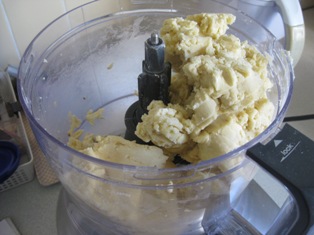
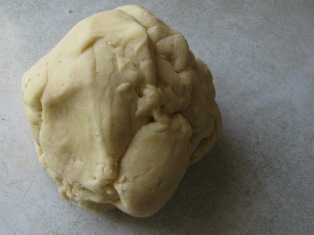


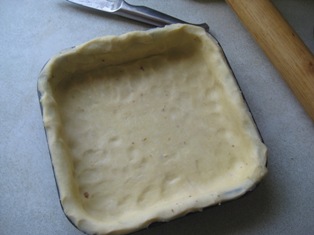

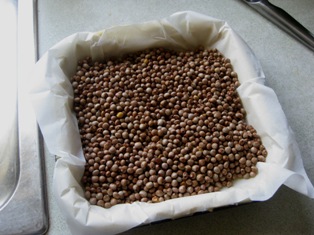

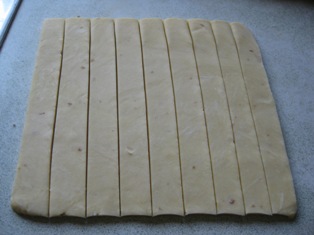
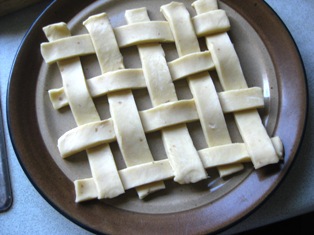
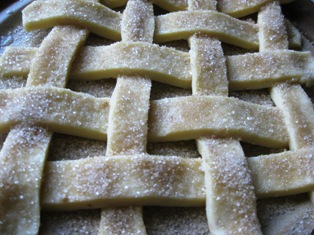
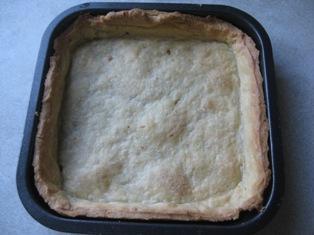

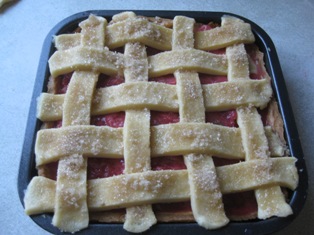











No hay comentarios:
Publicar un comentario